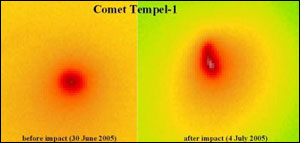This area deals with the fundamental laws and building blocks of nature and how they interact, the properties and the behavior of matter, and research into space and time and their structures.
innovations-report provides in-depth reports and articles on subjects such as astrophysics, laser technologies, nuclear, quantum, particle and solid-state physics, nanotechnologies, planetary research and findings (Mars, Venus) and developments related to the Hubble Telescope.

Its name is Y(4260) and it is not a new humanoid of Stars Wars, but a particle identified for the first time by BaBar experiment: an international collaboration – formed by the large participation of the Italian physicists of the National Institute for Nuclear Physics (Infn) – that has its seat in Stanford (California). Y(4260) represents an interesting element with respect of particles’ field and it will provide very useful signs about character of the strong force, that is the force that holds tog

A groundbreaking group of theoretical and experimental physicists is coming together to experiment with a phenomenon that disturbed Einstein and which could one day make super-fast quantum computers a possibility.
Centenary professor of quantum information science Vlatko Vedral (pictured) is an expert in the theoretical study of entanglement – a phenomenon Einstein called ‘spooky action at a distance’. Two ‘entangled’ particles are connected because the fate of one depends on the
VLT First Images of Comet Tempel 1 After Impact
On the night of July 4, 2005, all ESO telescopes continued their extensive observing campaign of Comet Tempel 1. But this time, they were able to see the effect of the impact on the comet. The astronomers were clearly not disappointed.
The impact occurred at 07:52 CEST but because the comet has already set in Chile at that time, observers at the La Silla Paranal Observatory could only start observing several hours later. The

These animations, composed of images taken by the OSIRIS Narrow Angle Camera on board ESA’s Rosetta spacecraft, shows how the brightness of Comet 9P/Tempel 1 developed after impact.
www.esa.int/SPECIALS/Rosetta/SEMSJ06DIAE_0.html

Dust and gas are seen in these images of Comet 9P/Tempel 1, as observed with the 1-metre ESA Optical Ground Station (OGS) telescope, located at the Observatorio del Teide on Tenerife, Canary Islands.
Two different filters have been used in different visible light observations to study different aspects of the comet’s nature. Red ’broadband’ filters allowed the detection of dust, while blue ’narrowband’ filters, filtering only carbon gaseous compounds, allow the observations to

Through the night of 4 July 2005, all European Southern Observatory (ESO) telescopes observed the effects of the impact on Comet 9P/Tempel 1. At sunset in Chile, the seven telescopes of the La Silla Paranal Observatory went into action.
The FORS2 multi-mode instrument on Antu, one of the 8.2-metre Unit Telescopes of the Very Large Telescope (VLT) array, took stunning images, showing that the morphology of the comet had dramatically changed: a new bright fan-like structure was